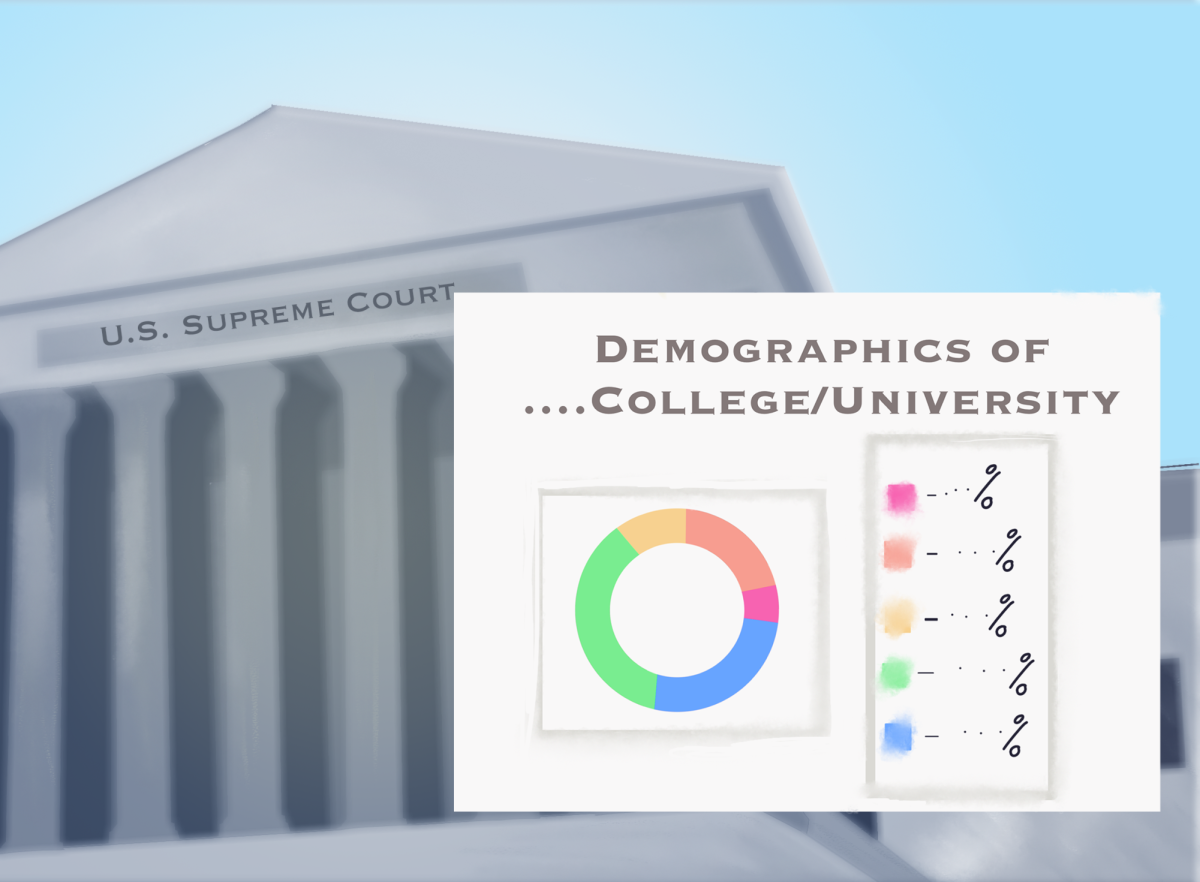It has been more than a year since the United States Supreme Court made the decision to ban the use of affirmative action in college admissions, sparking nationwide debate and leaving many students concerned about how this change may impact diversity and equity on college campuses.
In June of 2023, the Supreme Court ruled against race-conscious affirmative action used by Harvard University and the University of North Carolina, on the grounds that it violated the 14th Amendment and the Civil Rights Act of 1964. Since the early 1960s, affirmative action policies have allowed higher education institutions to consider an applicant’s race, along with other factors such as gender and religion, in their evaluation and acceptance processes.
Though the constitutionality of such policies has been widely debated following their implementation, reports from the US Department of Education show that race-conscious reviews were an important tool that ensured historically underrepresented students of color fair consideration for admissions decisions.
These policies greatly aided many colleges in their goals to foster diversity on campus, a value that private, selective schools tend to favor, according to Karen Ellis, Pali’s Director of College Advising. She explained that under the existence of affirmative action, the race of applicants was weighed differently in the decision process, depending on the school.
“The more selective schools did include race in a lot of their decisions,” she said. “I don’t necessarily think it was for a bad reason, it was for them to ensure diversity on their campus.”
However, the court’s reversal of affirmative action practices in higher education prompted concerns amongst students applying to college in subsequent years, especially those from minority backgrounds.
Senior Afomachukwu (Afoma) Kojo Onwaeze, whose brother Chukwononso (Nonso) Kojo Onwaeze graduated from Pali this past June, said that the removal of affirmative action from the college admissions process was difficult for her first-generation family to digest.
“For [the Supreme Court] to put a ban on it, it just reduces people of color and makes them feel like they have no chance, especially at [predominantly white] institutions,” she said.
While not all universities have released their enrollment statistics for their most recent first-year admitted classes, early enrollment trends so far show that there have been notable declines in enrollment of Black students at many prestigious institutions, whereas white and Asian enrollment has modestly increased.
However, students at Pali have not fully experienced the impact on admissions diversity felt by the rest of the country. Ellis said that the removal of affirmative action did not greatly affect students who went through the college admissions process in the 2023-24 school year, the first class admitted with this new ruling in place.
“Our students are so well-prepared that students of color who were planning to go to a four-year [college] were able to reach their goals,” she said. “It’s a little different the way it’s gauged here, but I didn’t see a drop or decline for students of color being able to go to four-year universities if they wanted to.”
Reflecting this finding, Kojo Onwaeze said that affirmative action did not ultimately affect her brother’s experience as much as he expected. Nonso Kojo Onwaeze is currently attending Northwestern University, a top private school ranked No. 6 nationally.
“With or without affirmative action, he would have done well for himself because he worked hard and was ahead of others,” she said.
As for the 2024-25 admissions cycle, Ellis predicted that current seniors can expect to see the same minimal effects that race-blind admissions had on Pali students last year.
Honors Government teacher Benjamin Sands believes that the end of affirmative action will be beneficial to higher education in the long run.
“All I hope is that every senior who applies to college is given equal consideration to everyone else,” he said.
Although the long-term implications of affirmative action’s end are uncertain, information available so far shows that it has minimal, if any, effects on students’ achievement. Ellis believes that students aspiring for top colleges are capable of reaching their goals, even when given equal consideration in the admissions process.
In order to keep up this trend, Ellis encourages students of color to become more proactive in the application process by taking advantage of the opportunities given to them by their school.
“We should all work hard on being a great applicant, which means starting to prepare yourself as early as ninth grade, taking advantage of scholarships and summer programs that are happening on these college campuses, and attending the rep visits that we have here,” she said.
Ellis emphasized the value of outside engagement with colleges for students of color, s“Start engaging with the universities well before you start applying,” she said. “I think that will maintain the diversity of the campus and allow them to really see you, other than just on paper.”








